| Home | Drawings | Prints | Actions | Acid drops | Exhibitions | Collaborations | Bio | Contact |
| Atlantic-Formed Sea Plate |
||||||||
| Geographies of Print Instagram account takeover 26 June 2022 (text and images): Collaboration with Geographies of Print |
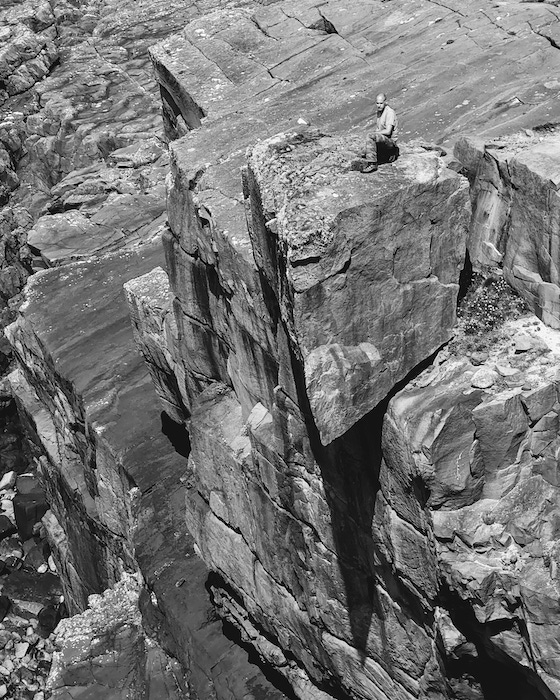 |
|
Thank you to Geographies of Print - Victoria Ahrens, Carol Wyss and Victoria Arney - for giving me the opportunity of doing this Instagram takeover. The above image (photo by Asako Yokoya): On Rubha Coigach peninsula in North-West Scotland, overwhelmed by the moment between the past and the future, the present disintegrating beneath my self. I recreate and draw on the ongoing processes and forces that transform our environment, both natural and human-made, over time. I integrate this practice, myself, and my personal psychology with that environment and resulting work. It is psycho-navigational: a way of finding my location and direction; my means of survival. |
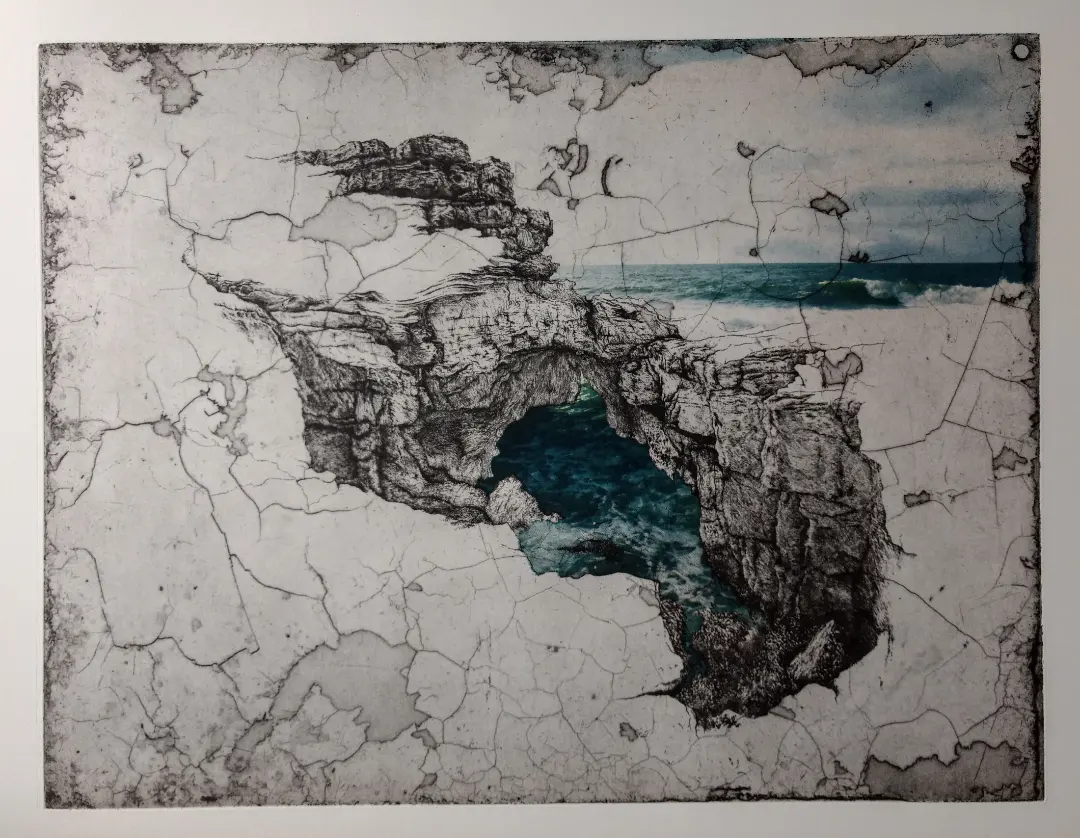 |
 |
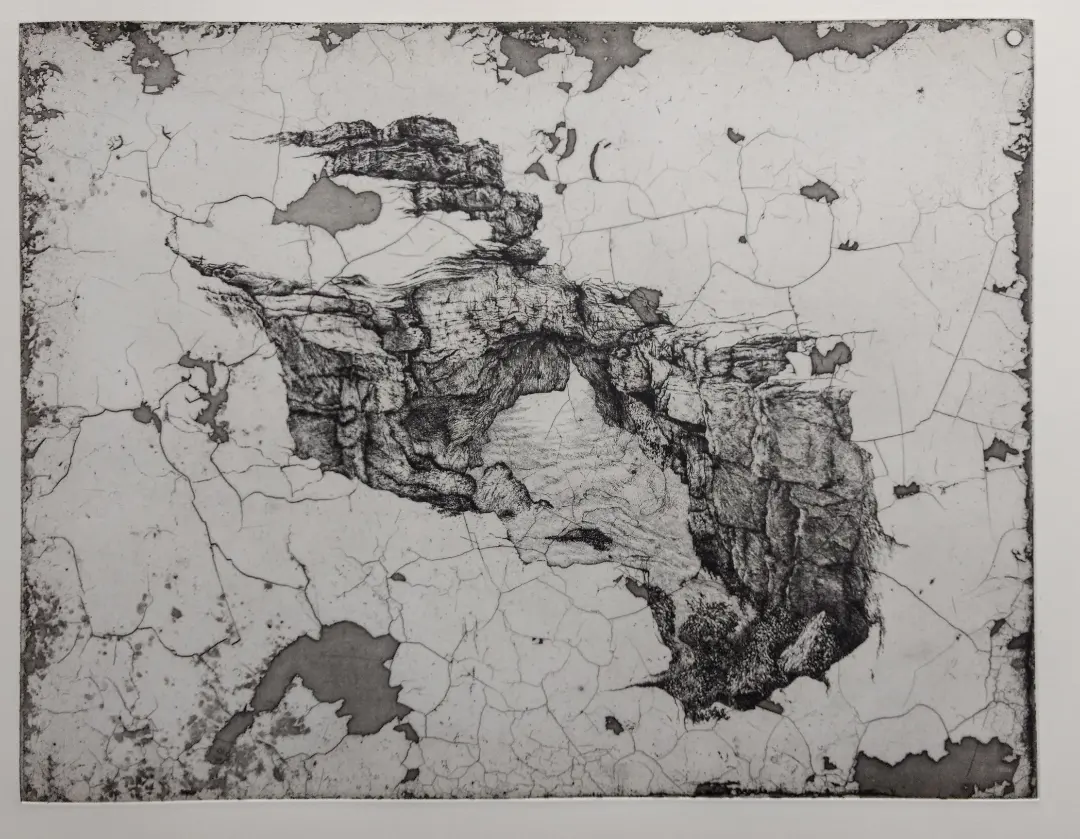 |
 |
|
Image 1 CHANGING CHANNELS III - exits final (2017 - 2018) Etching and photopolymer intaglio |
|
Image 2 CHANGING CHANNELS I - significant events (2017) Etching and photopolymer intaglio |
|
Image 1 CHANGING CHANNELS II - unexpected consequences (2017) Etching and photopolymer intaglio |
|
Image 1 CHANGING CHANNELS III - exits final (2017-2018) Etching and photopolymer intaglio |
|
All prints 71cm x 85cm |
|
I wrote in 2017: "I have repeatedly visited a place of personal significance on the Northumberland coastline, where I use its unique effects of geology and sound to focus, think, and draw what I see on a grounded etching plate. Sitting in a tide-filled rock amphitheatre, looking through a tunnel channelling the sea in and out. Whilst drawing I have been trying to work out my psychological location. "Through this activity, I realised that I have been suffering from something which is a symptom emerging from my innate psychological make-up. "I had been side-tracked, lost in a cycle, trapped in a misdirection of my natural abilities; but these abilities can compel me, and enable me to draw with intense, obsessional focus and detail. Channelling my energies in this way, I reach a state of oneness with the surface to which I am attached, and thereby find my location. "The drawing on the plate will never be finished, only suspended; then I will enter the water and swim through the channel to the open sea, so entering the image. These are acts of rebirth." As I was drawing, a second etching plate lay chained to a rock in the tunnel, under the sea, for one summer full moon tide. By integrating the Sea Plate and the Drawn Plate during printing, I set up a dialogue between the two plates - in effect between myself and the sea. Using photopolymer intaglio plates, I then introduced a photographic element moving through the drawing, like my final act of swimming through the channel to the open sea. |
| CHANGING CHANNELS - Enter the Image (2017) |
|
Enter the Image (video of action, 2017) I was struggling with a lot of difficulties during this period, which culminated in a very real near-death experience; and this then led me to devise a ritualised crossing of psychological boundaries in this 'action' - returning to the source of the drawing, to pass through, in actual physical reality, the image in the etching. |
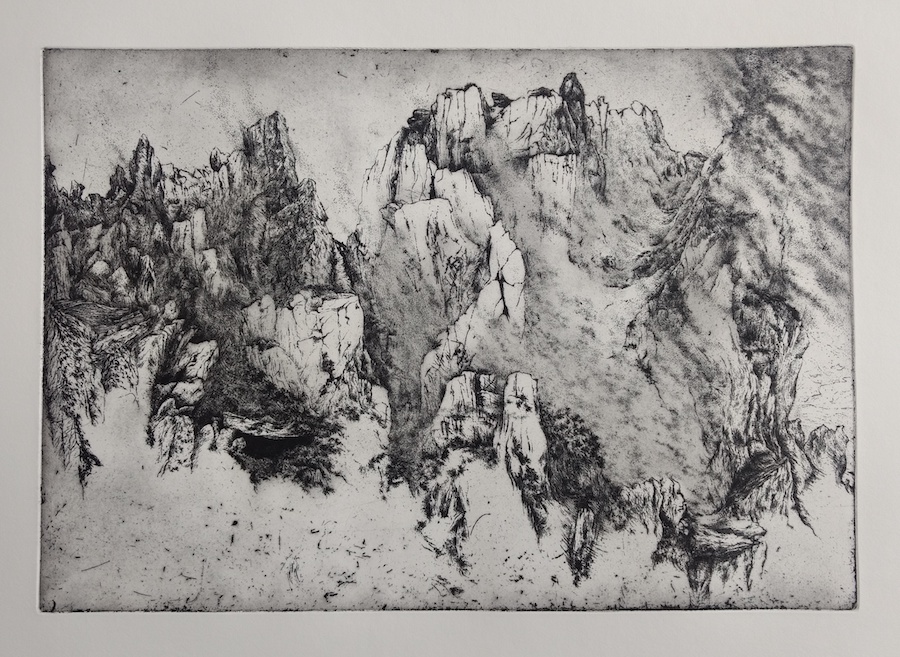 |
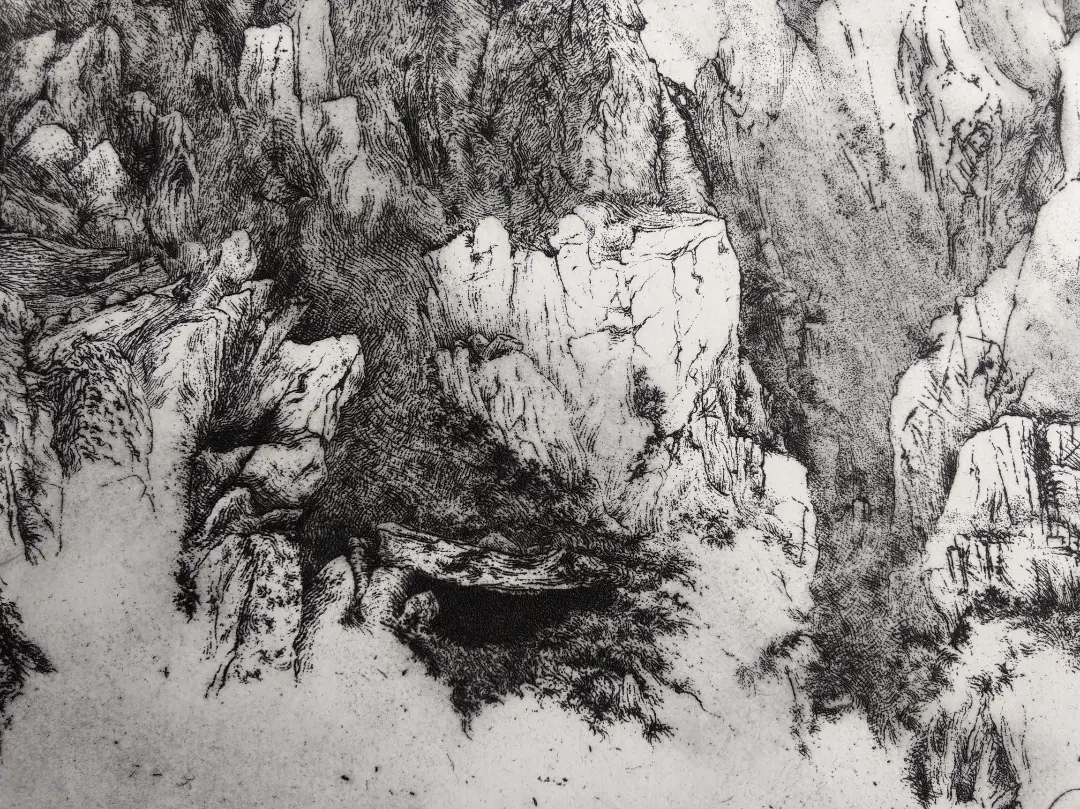 |
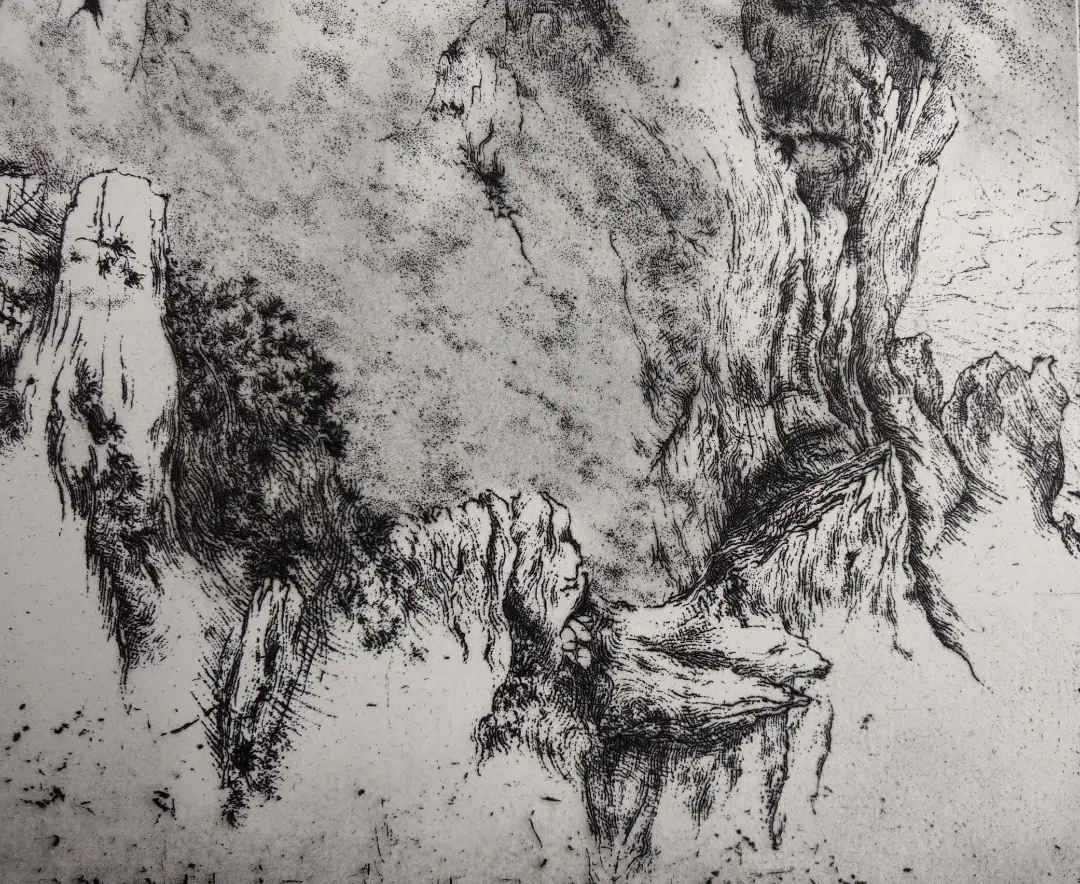 |
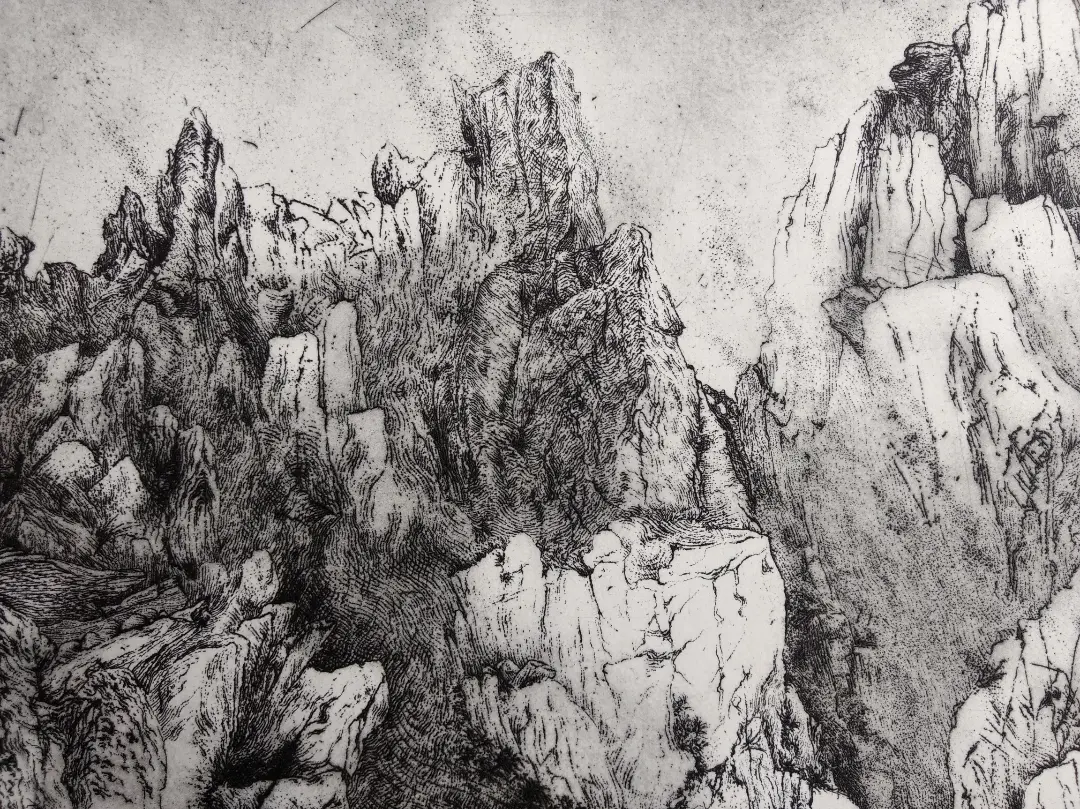 |
|
Image 1: 23 Days of Absorption (2019) This image was drawn into a grounded etching plate entirely on location in Snowdonia. Over a year I journeyed from London to sit on a rocky ledge. This precipice was attainable via a gully scramble, 100 metres below a summit, clinging to a cascade of mountainside. A precarious place to be, perched over air, at times 'cold hand drawing' and wet to the skin; where I am, in time and space, a minute point absorbed by something much greater. |
 |
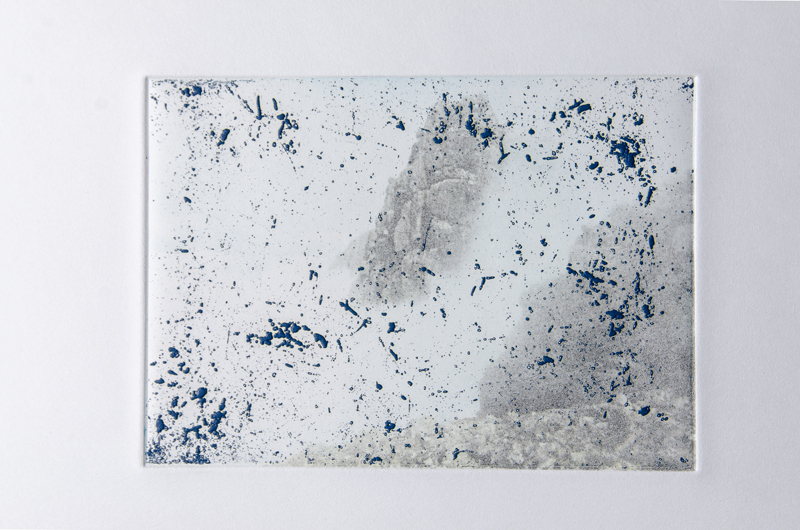 |
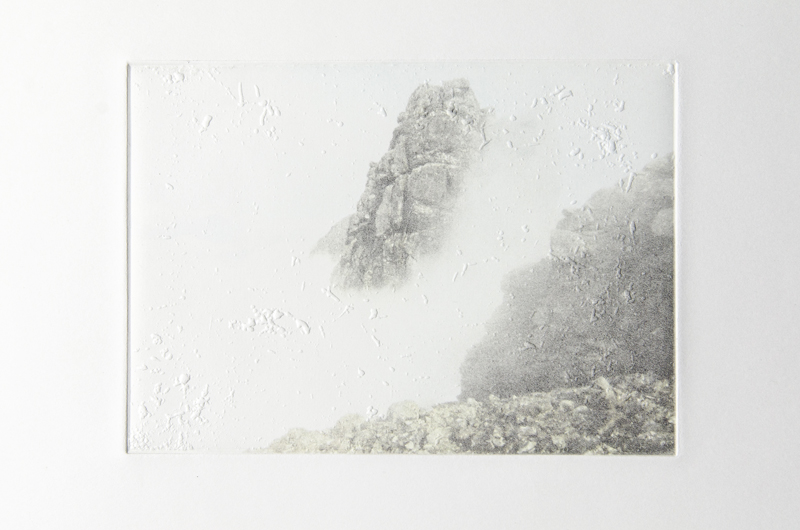 |
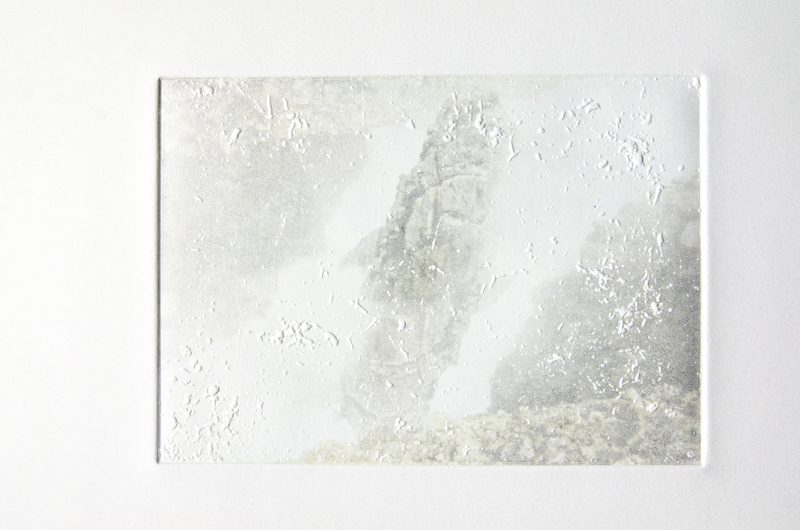 |
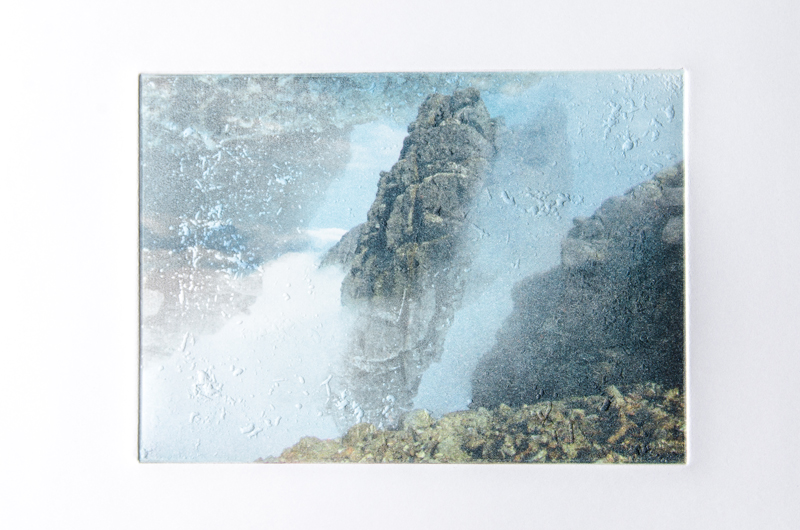 |
|
Image 1-5: Traverse I-V (2015), photopolymer intaglio print with etching, 11cm x 16cm In May 2014 I made a two-day traverse of the Black Cuillin mountain range on the Isle of Skye off the north west coast of Scotland. With me on this journey I took a grounded copper printing plate, carried in my rucksack: in the bag I put two pieces of rock picked up at the beginning of the initial ascent, gabbro and basalt, which make up the majority of the ridge. They scratched through the ground of the plate as I walked, scrambled and climbed for two days, and the marks created were later deeply etched into the plate with acid. This "Traverse Plate" was printed, embossed, inverted, used as an offsetting plate, and integrated into a multi-plate series of photopolymer intaglio prints, based on a photographic image taken at a point of exhaustion towards the end of the second day. Thus the series incorporates an embodiment of the physical experience of moving along the 12 kilometres of the ridge. Traverse I-V in itself is a series of significant events and an exploratory excursion out of its own printing system. |
| Burning (2011) |
 |
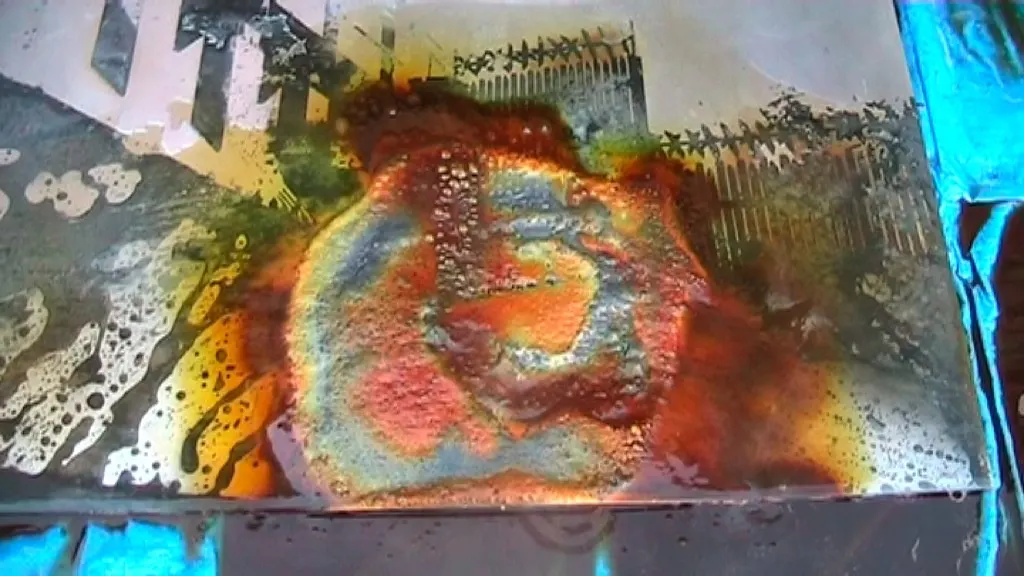 |
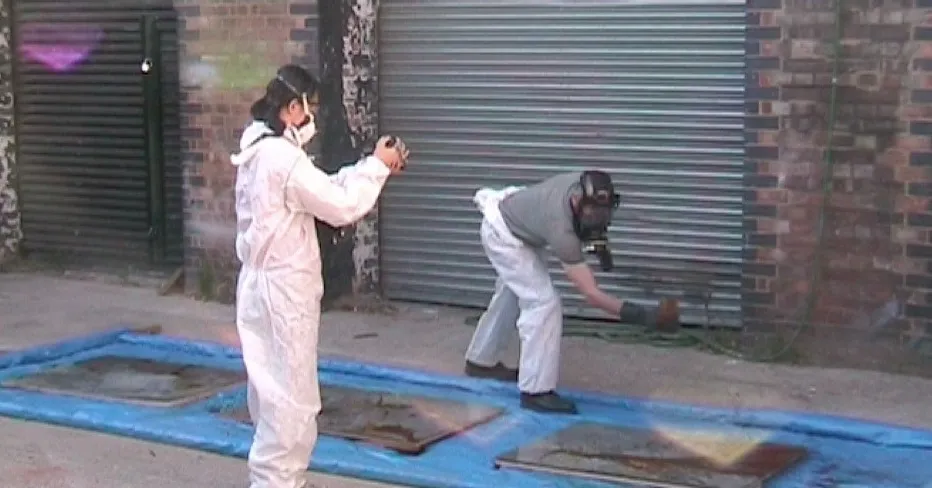 |
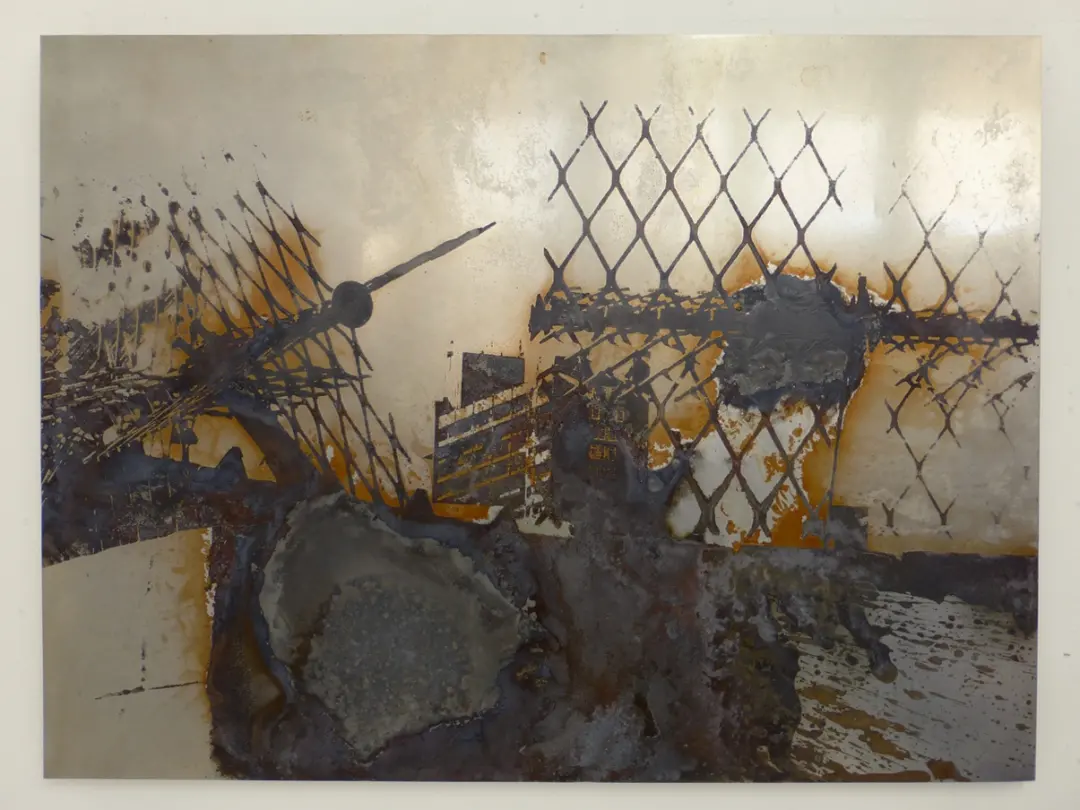 |
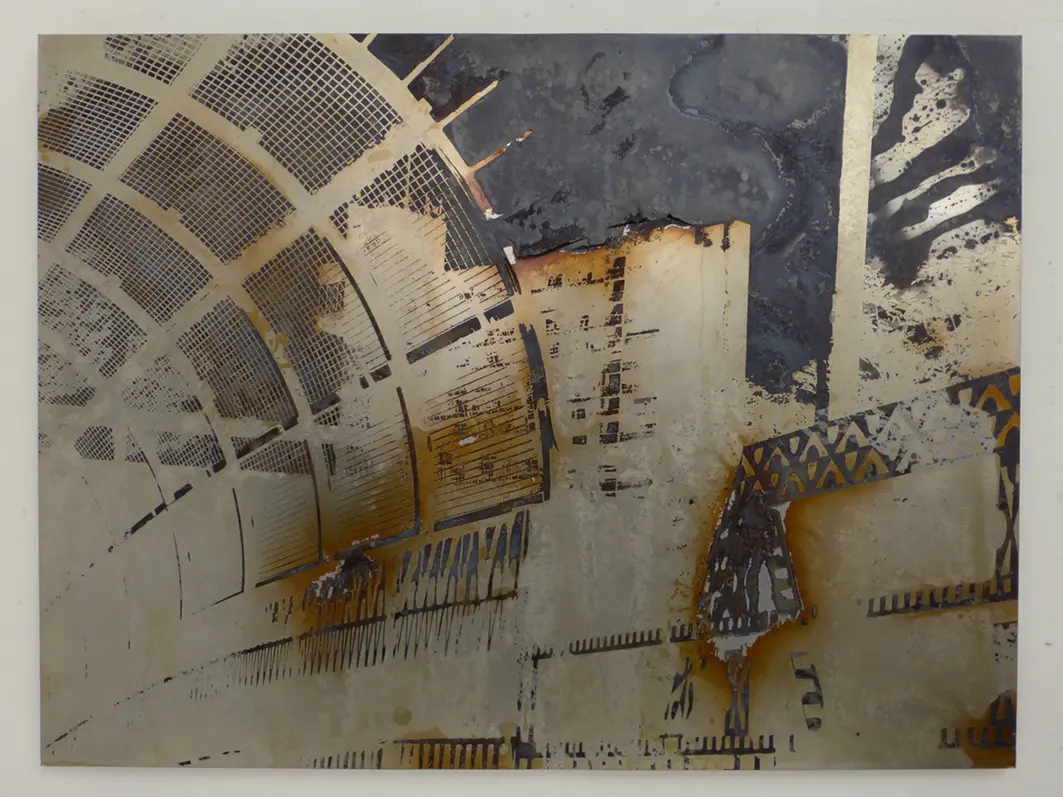 |
 |
|
Image 1: Burning (clip from video of action by Brian D Hodgson and Asako Yokoya, 2011) Image 2-4: stills from video 'Burning' used a number of photographs I took around the Westway in west London, with a view to showing the work at the Portobello Pop-up Cinema. I screenprinted three metal plates with the photographic urban images in transparent varnish, so that the plates appeared to be blank. The varnish stencil was designed to work as an etch resist. I threw at the plates a mordant known to be very reactive with the metal. The power of the etching process and the destructive action, form the image in front of the viewer. It is an image quite literally of a decaying and burning urban landscape. The urban imagery used was intended to appear during the action at the same time as being broken down and destroyed. I was particularly interested in the convergence of the real-time chemical reaction and the emerging image; appearing from nothing, it hangs in the air, its history compressed in a brief chemical reaction. |
 |
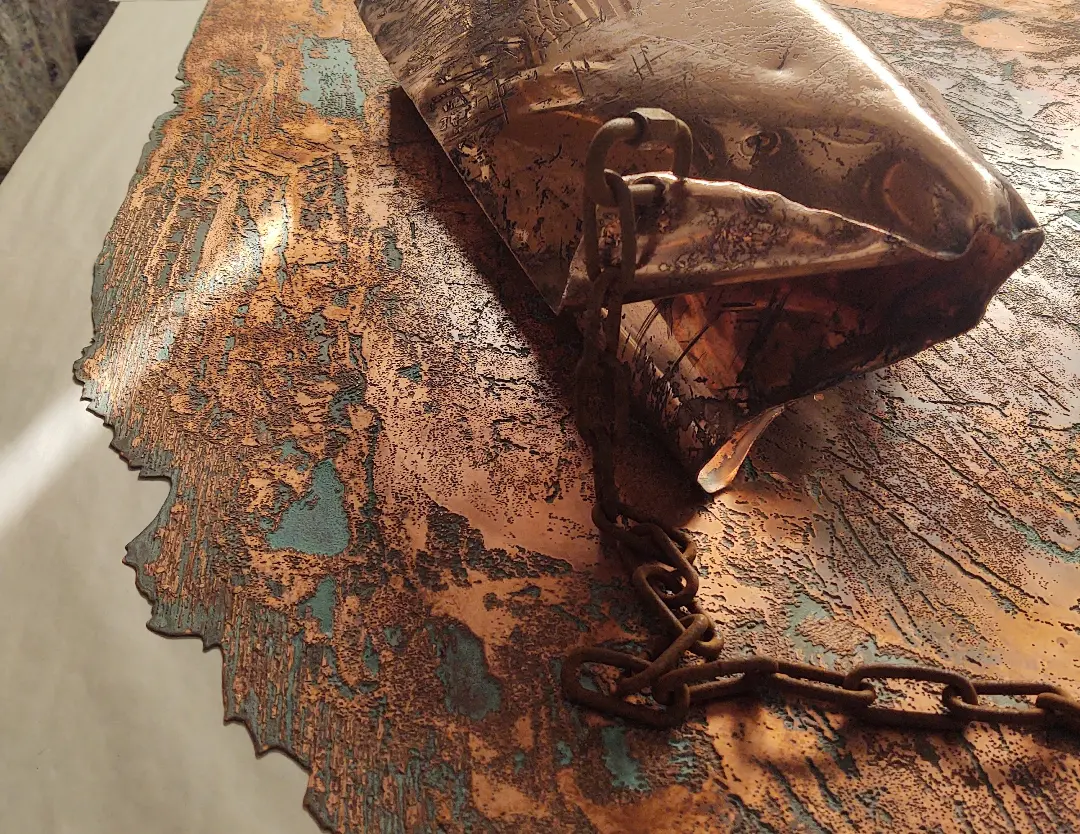 |
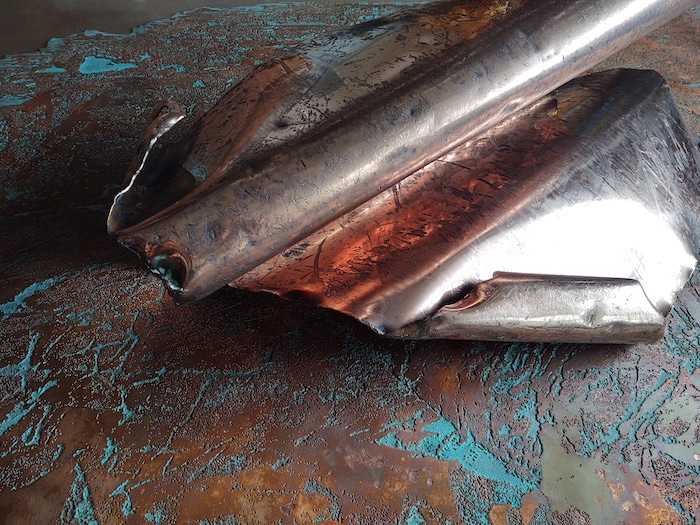 |
 |
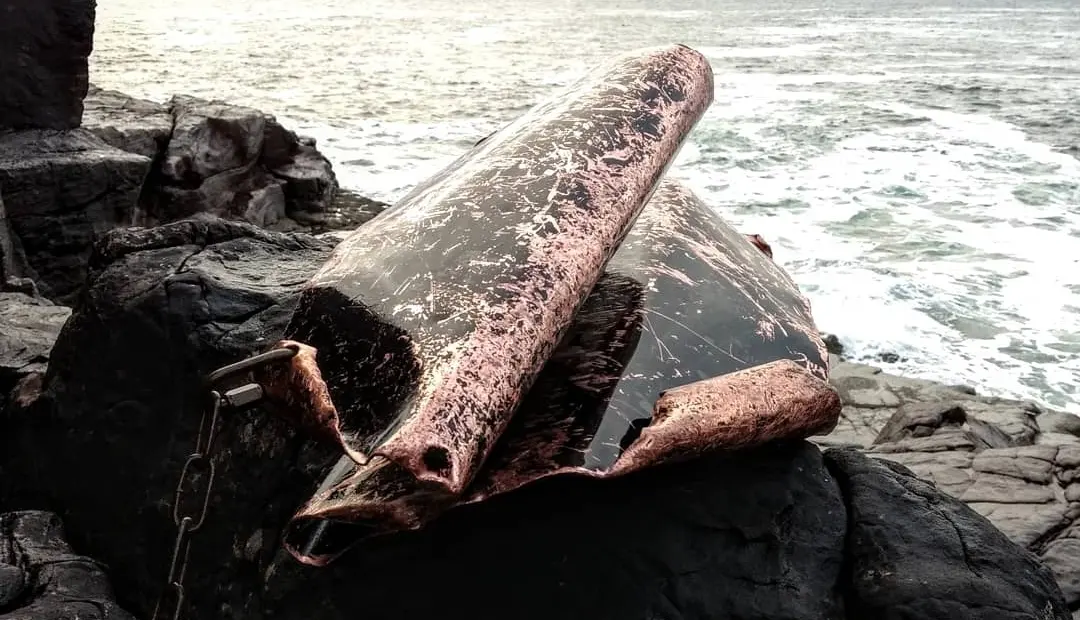 |
|
Image 1: Atlantic-Formed Sea Plate (2019-present) Image 2-3: Close-ups Atlantic-Formed Sea Plate was originally planned as a large-scale grounded copper printing plate, tethered with rope and chain to the edge of land but submerged in the sea for one night-tide to be marked by the action of that environment. This plan was subverted by the intervention of an Atlantic storm during its 12-hour submersion off the coast of North-West Scotland. I spent the night nearby, within the noise of the waves, restless; in half-sleep, I wrote these words: "I wonder if tonight I will dream of this thing - The plate survived, recovered the next morning, transformed into an artefact manifested by nature, powerful enough to overwhelm human intention. I then took the plate that was now deeply marked and twisted permanently into its present form, and etched it in acid. It rests upon a base plate for this piece which was photo-etched using an image of the rocks upon which it was dashed. The work is still live, subject to atmospheric change and the agency of the artist. |
 |
 |
|
Current work Image 1: Night Drawing Summertide (2021-present) Etching, 45cm x 53cm Image 2: Rubha Coigach, artist's proof (2020-present) Etching, 60cm x 40cm Continuing my search for somewhere to be, I came upon strange and beautiful mountains and coastlines in Coigach and Assynt, North-West Scotland. They have been drawing me back for a number of years and are central to my current work, for which I find myself compelled to immerse myself in these timeless places where Nature's processes are more apparent. |
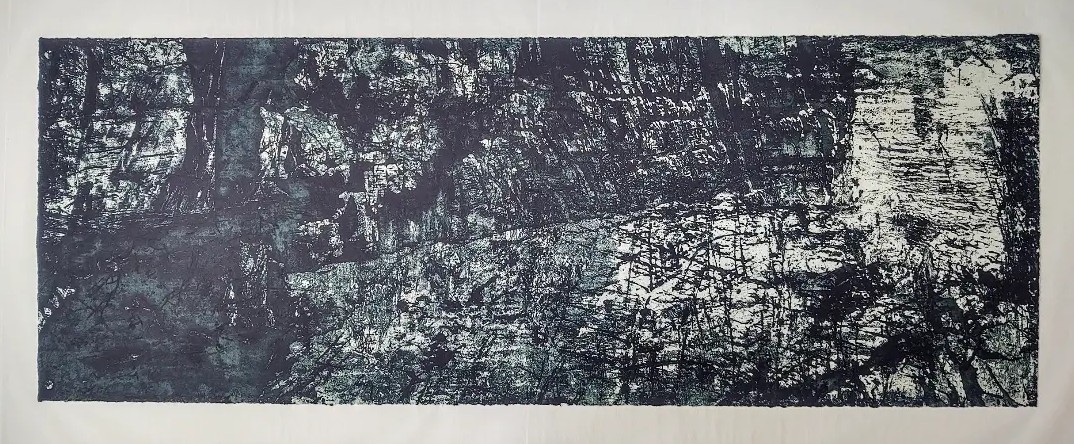 |
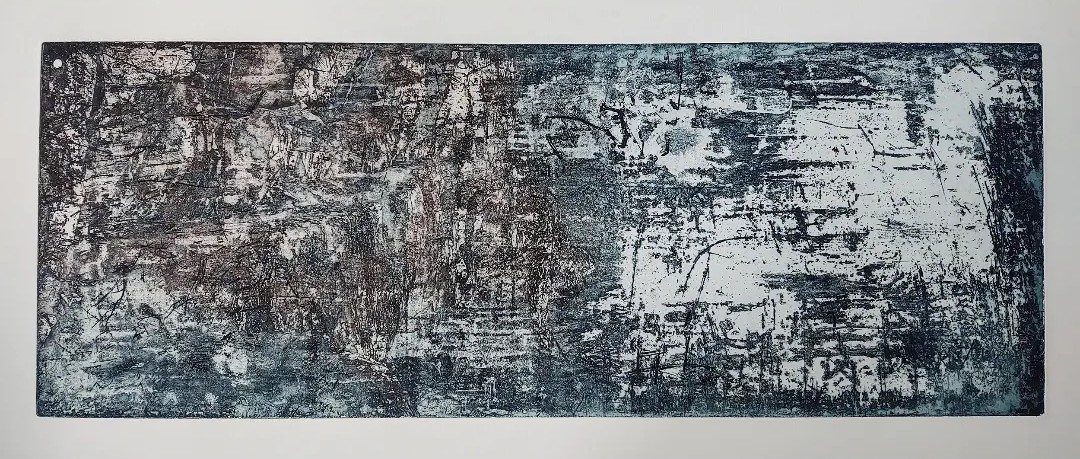 |
 |
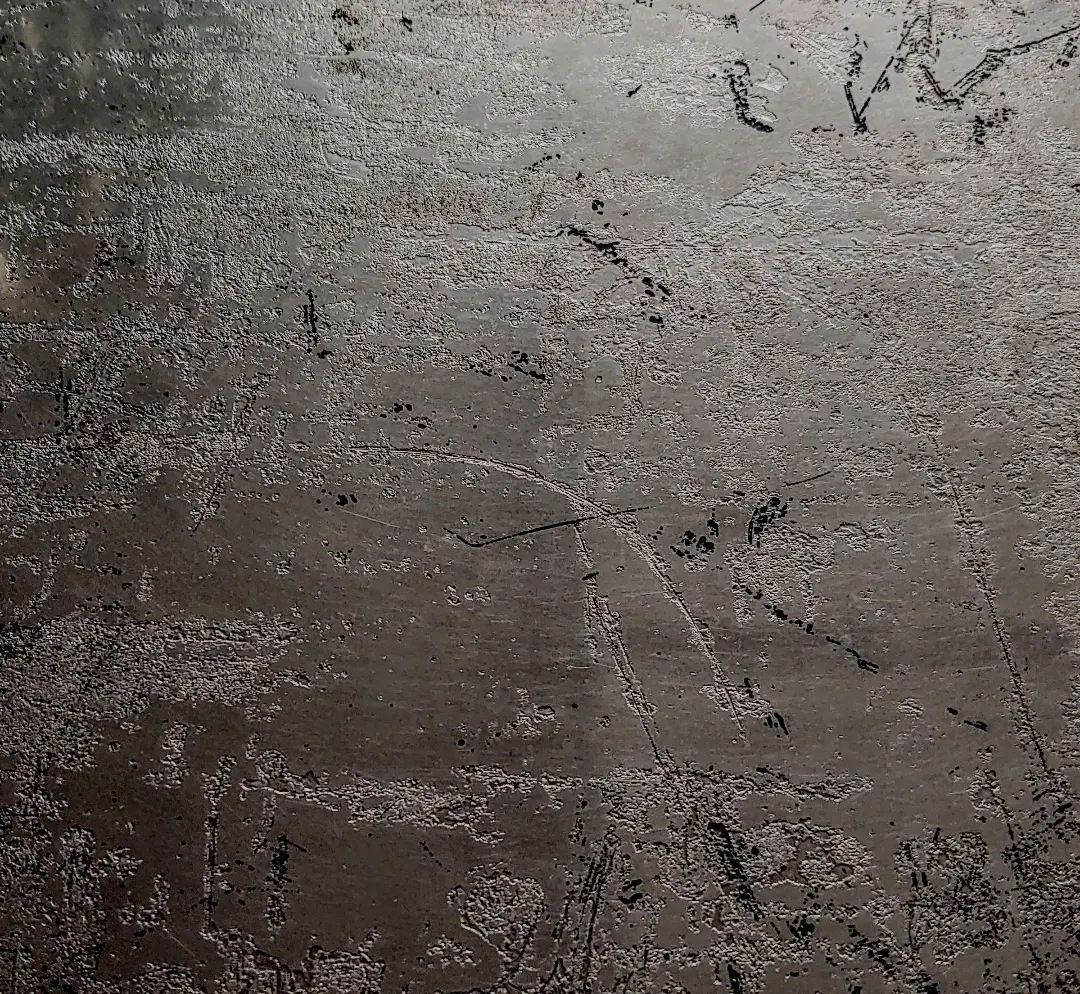 |
|
Current work Image 1: Lost to the Sea (2021-present) Image 2: Future States (2021-present) Image 3: Print detail By using photographic acid etching processes on copper plates, and through the actual sea immersion of these plates, I am exposing the plates to environmental erosion, attrition, and corrasion; this erodes, erases, and replaces the photographic images of the Coigach coastline, which is itself in an ongoing state of change. The acid etching process serves to accelerate and compress time. The works are often ongoing: though suspended for periods of time, they are not permanently arrested in their capacity for further transformation. My work addresses an individual's finite time within a broader temporal context: the process of integrating myself in the landscape over time through drawing, and the erosive attritional processes I use, reflect this. Planned future activities: In May and June next year (2023), I will be exhibiting work with @veronica.vossen in "Aeonic" at An Talla Solais art centre, Ullapool, with thanks to its Creative Development Manager Mhairi Muncaster. Thanks again to Geographies of Print - Victoria Arney, Carol Wyss and Victoria Ahrens. |
| How to Improve the World: 60 years of British Art: collaboration with Gustav Metzger and the Hayward Gallery, London Recreated Gustav Metzger's 1961 South Bank Auto-destructive art - acid on nylon demonstration. 2006 |
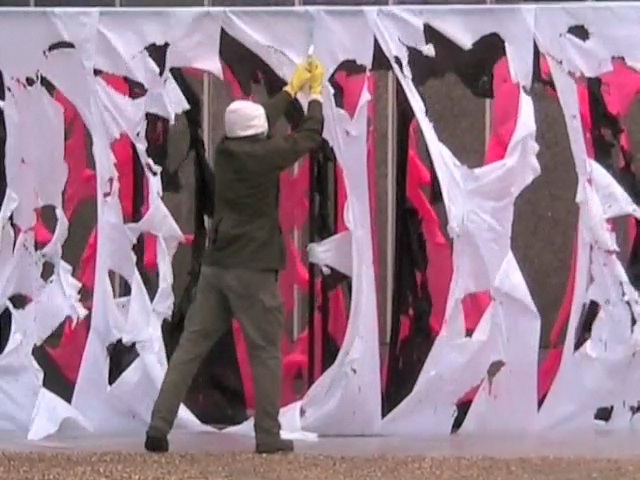 |
| © Brian D Hodgson |